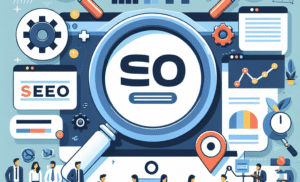Related Posts
Introduction to the Customer Journey in the Digital Age
What Is the Customer Journey Online?
The Stages of the Customer Journey Online
- Awareness: The potential customer first becomes aware of a product or service. Digital channels like social media ads, SEO, content marketing, and influencer collaborations play a vital role here.
- Consideration: The consumer researches options, compares features and prices, reads reviews, and seeks more information. Here, providing valuable content such as blog posts, videos, and FAQs is essential.
- Decision: After evaluating alternatives, the customer decides to purchase. Optimizing website UX, providing clear calls-to-action, and simplifying checkout processes enhance conversion rates.
- Retention: Post-purchase, efforts focus on customer satisfaction, encouraging repeat business through email follow-ups, loyalty programs, and excellent customer service.
- Advocacy: Satisfied customers become brand advocates, sharing positive reviews and referrals, which feeds back into the awareness stage and influences new prospects.
Mapping the Customer Journey Online
- Identifying all touchpoints — websites, social media, emails, chatbots, reviews, etc.
- Understanding customer motivations and behaviors at each stage.
- Collecting data through analytics tools to track interactions and conversions.
- Identifying gaps or bottlenecks where potential customers drop off.
Tools and Technologies for Understanding the Online Customer Journey
- Web Analytics Platforms: Tools like Google Analytics provide insights into website traffic, user behavior, and conversion rates.
- Customer Relationship Management (CRM) Systems: CRMs help track interactions, preferences, and purchase history, enabling personalized marketing.
- Marketing Automation: Platforms like HubSpot, Mailchimp, and Marketo automate campaigns based on customer actions and lifecycle stages.
- Heatmaps and Session Recordings: Tools like Hotjar or Crazy Egg help visualize where users click, scroll, and spend time on your site.
- Social Listening Tools: Monitoring brand mentions and sentiment on social media platforms to gauge customer perceptions.
Personalization and the Customer Journey
Challenges in Understanding the Customer Journey Online
- Data Silos: Customer data spread across different platforms can be hard to unify.
- Attribution Complexity: Determining which touchpoints or channels contributed most to conversions is complex but crucial.
- Changing Customer Behaviors: Digital trends and consumer expectations evolve rapidly, requiring ongoing adaptation.
- Privacy Regulations: Increasing restrictions limit data collection and tracking options.
Optimizing the Customer Journey for Better Business Outcomes
- Creating seamless user experiences — intuitive navigation, fast load times, mobile responsiveness.
- Providing valuable content at each stage — educational blog posts, comparison guides, testimonials.
- Implementing live chat and AI-powered chatbots for instant assistance.
- Utilizing retargeting ads to re-engage visitors who have shown interest but haven’t converted.
- Gathering feedback through surveys and reviews to identify areas for improvement.
The Future of the Customer Journey Online
- Hyper-Personalization: Real-time customization based on extensive data analysis.
- Omnichannel Integration: Unified experiences across multiple devices and platforms.
- Voice and Visual Search: Enhancing discoverability and engagement.
- AI-Driven Customer Insights: Deeper understanding of customer needs and behavior patterns.
Conclusion: Mastering the Online Customer Journey
Tips for Crafting Powerful Calls to Action
Comments Off on Tips for Crafting Powerful Calls to Action
Instagram Marketing Tips for Small Businesses
Comments Off on Instagram Marketing Tips for Small Businesses
SEO Basics: What Every Business Should Know
Comments Off on SEO Basics: What Every Business Should Know
How to Handle Negative Reviews Professionally: A Comprehensive Guide for Businesses
Comments Off on How to Handle Negative Reviews Professionally: A Comprehensive Guide for Businesses
The Role of Analytics in Marketing Success
Comments Off on The Role of Analytics in Marketing Success




